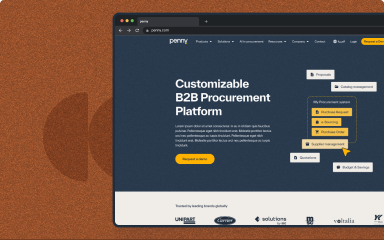A Call to Action for Procurement Leaders
The procurement landscape is undergoing a seismic shift, driven by transformative technologies like hyperautomation. This isn’t just a trend; it’s a must-have capability for any organization looking to compete and thrive. Penny Software, a leader in cloud-based Source-To-Pay solutions, is at the forefront of this revolution. This article aims to provide an in-depth look at why hyperautomation is essential for procurement’s future.
Unveiling Hyperautomation: Beyond the Hype to Operational Excellence in Procurement
The Gartner Hype Cycle for Procurement and Sourcing Solutions, 2023, identifies three pivotal themes shaping the future of procurement technologies: Hyperautomation, Data and Analytics, and Supplier Collaboration. This article zeroes in on Hyperautomation, offering a nuanced understanding of its myriad components and transformative impact on procurement processes.
Hyperautomation is not a mere buzzword; it represents a complex blend of advanced technologies that go well beyond traditional platforms such as Robotic Process Automation (RPA). While RPA has its role, it is increasingly considered as only a small part of the broad capabilities that hyperautomation provides. Integrating advanced technologies like AI, machine learning, and data analytics, hyperautomation offers a holistic, unified system that aims for complete operational efficiency.
So, what is Hyperautomation in its essence? It is a comprehensive mix of machine learning, packaged software, and various automation tools that significantly elevate work processes. For the procurement sector, hyperautomation equips organizations with intelligent mechanisms that foster more agile, efficient, and data-centric strategies. According to Gartner’s projections on IT Automation Trends, organizations that synergize hyperautomation technologies with redesigned operational processes are expected to reduce operational costs by up to 30% within the next two years.
In summary, hyperautomation is a disciplined, business-driven approach that enables organizations to rapidly identify, evaluate, and automate a wide array of both business and IT processes. As Gartner defines it, the orchestration of multiple technologies, tools, or platforms is key. This could involve a range of technologies like AI, machine learning, event-driven software architecture, RPA, Business Process Management (BPM)/iBPMS, integration platforms, low-code/no-code tools, and other types of decision, process, and task automation tools.
Assembling the Ideal Hyperautomation Team for Procurement Excellence: A Data-Driven Approach
Successfully implementing hyperautomation in procurement requires the strategic formation of a specialized, multidisciplinary team that can seamlessly integrate technological advancements with core procurement functions.
The Multidisciplinary Team: Backed by Research
A McKinsey report states that organizations with cross-functional teams are 1.5 times more likely to experience revenue growth than those without. These teams combine various expertise, from software development and analytics to procurement strategy, each contributing to an agile and more holistic approach.
The Case for Multidisciplinary Teams over Traditional Teams
In traditional setups, the technology and procurement teams often operate in silos, limiting the scope for innovation. In contrast, multidisciplinary teams work towards a unified goal, capitalizing on each member’s expertise. A Deloitte study found that organizations employing such teams reduced their procurement-related operational costs by up to 20%, underscoring the value of integrated approaches.
Strategy and Tool Selection: Aligning with Organizational Goals
Selecting appropriate hyperautomation tools is not a one-size-fits-all endeavor. According to Gartner’s IT Automation Trends, organizations that effectively integrate hyperautomation technologies with a redesign of operational processes stand to lower operational costs by 30% within two years.



